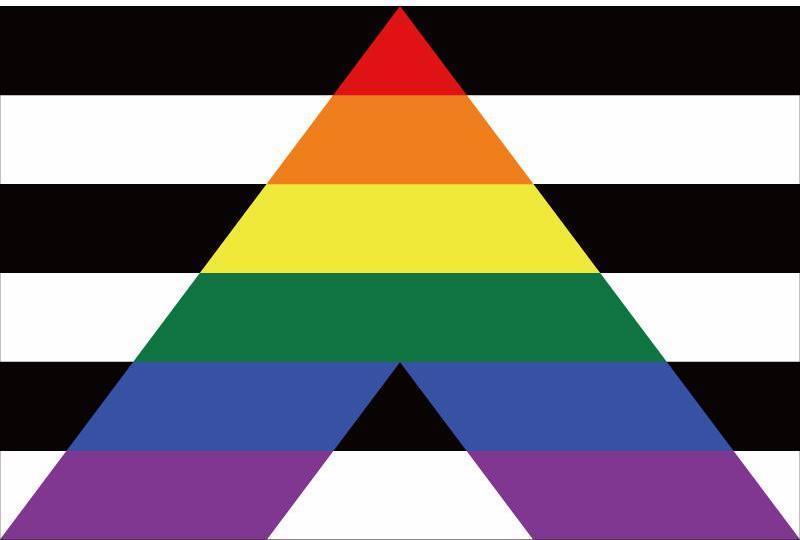Allyship: What it Is, Where it’s Seen, and How We Can Better Practice it
According to the Gay, Lesbian, and Straight Education Network (GLSEN), “Allyship is when an individual speaks out and advocates for a person or group that is often targeted and discriminated against. Allyship works to interrupt and end oppression by supporting and advocating for people who are stigmatized, discriminated against or treated unfairly.” In 2005, GLSEN began its annual Ally Week campaign. This year, Ally Week spans from September 23-27, with its goal being to encourage people– especially schools– to stand in solidarity with LGBTQ+ youth. However, as GLSEN mentions, allyship is not performative; while the purpose of Ally Week is to acknowledge the efforts of LGBTQ+ allies and pay special tribute to those in the community, it is not the only time one should be demonstrating allyship. A true ally is one who consistently shows support toward the LGBTQ+ community, challenges discrimination and hate, and acts as an advocate for both LGBTQ+ individuals and the community as a whole when others do not.
So, how does Lyme-Old Lyme demonstrate allyship? On the student level, there are certainly efforts to support the LGBTQ+ community. Members of Spectrum actively attempt to engage the school in events such as Day of Silence, World AIDS Day, LGBTQ+ History Month, etc., and a significant number of LOLHS students participate in these events. But, to reiterate, allyship is not performative. Many of the students who take a red ribbon on World AIDS Day may be the same ones who often sit in silence as their peers use homophobic slurs/attack the LGBTQ+ community.
While students should be advocating for their peers, blame cannot entirely be assigned to those who allow their LGBTQ+ peers to be mistreated. This is because on the faculty level, there are even fewer examples of true allyship. While it is wonderful to see the David Bosso “American Ideals” quote posted in almost every classroom, not all faculty members fully adhere to the statement they are making by hanging that sign up. In his message, Bosso (and thereby the teacher who is posting his quote) claims that every student is “welcome, safe, respected, supported, and [has] a voice here.” Unfortunately, this rings untrue for many LGBTQ+ students. Countless times, LGBTQ+ students have had to sit in class and hear derogatory remarks made about their identity while a faculty member sat idly by. How can one claim to practice support, safety, and inclusivity in their classroom while students are being made to feel isolated and unwelcome by their peers? Although often unintentional, faculty often perpetuates homophobic behavior by failing to advocate for the student and/or group being harmed. Posting the Bosso quote and/or occasionally participating in a Spectrum-run event (though both appreciated) are not ways by which true allyship is demonstrated; in order to be a true ally, one must actively and consistently make an effort to show their support.
Despite these unfortunate occurrences, allyship indubitably does exist at LOLHS. When a student complained about the previous night’s homework and called it “gay,” the teacher replied, “I don’t think your paper has a sexuality.” This response elicited a laugh from the class while simultaneously showing the student that such language was inappropriate and would not be tolerated. Another example is when teachers incorporate LGBTQ+ topics into the curriculum. One of the first steps toward equality is visibility, so highlighting struggles/significant events/advancements and other elements of LGBTQ+ history/existence is paramount in the effort to create an LGBTQ-positive environment. Ignorance leads to bigotry, so the more students are taught about their LGBTQ+ peers, the easier it becomes for them to develop empathy.
Ally Week will conclude on September 27th, but the practice of effective allyship should not end with it. Being an ally should not be difficult. To better practice allyship, you could begin by increasing your basic knowledge and awareness of LGBTQ+ topics (i.e. familiarizing with LGBTQ+ laws/policies in the U.S., learning about major events in the LGBTQ+ rights movement, reading news that is relevant to the community, etc). Additionally, explore ways in which you can be a better ally to the LGBTQ+ folks you already know. This can mean accepting and using a person’s preferred name and pronouns, doing research on your own to better understand them and/or their identity, or even just letting them know that you are someone they can lean on and talk to if need be. Finally, to practice better allyship, you must be an LGBTQ+ advocate. This means intervening in homophobic situations and standing up to intolerance. And while no one except Taylor Swift is a perfect ally who demonstrates unwavering activism and advocacy 100% of the time, the point is that you try your best and make a conscious effort to show love and support to the LGBTQ+ people in your life and the community as a whole.











